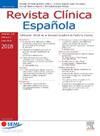Beneficios de un modelo asistencial integral en pacientes con insuficiencia cardiaca y enfermedad pulmonar obstructiva crónica: programa UMIPIC
IF 1.7
4区 医学
Q2 MEDICINE, GENERAL & INTERNAL
引用次数: 0
Abstract
Background
Patients with heart failure (HF) and chronic obstructive pulmonary disease (COPD) have a high risk of hospital admission and mortality. This study evaluated the benefit of a care model, characterized by comprehensive and continuous care (UMIPIC program) in patients with HF and a history of COPD.
Methods
A total of 5644 patients were prospectively recruited, of which 1320 had a history of COPD between March 2008 and March 2020. They were divided into two follow-up groups at the time of discharge, one in follow-up in the UMIPIC program (435 patients) and another treated conventionally (885 patients). The baseline characteristics of each group were analyzed and patients in each group were selected by propensity score matching and admissions and mortality were evaluated during 12 months of follow-up, after an episode of hospitalization for HF.
Results
The UMIPIC group, compared to the conventional group in the matched cohort, had a lower rate of admissions for HF (21 vs. 30%, respectively; hazard ratio = 0.64; 95% CI: 0.54–0.84; p = 0.002) and mortality (28 vs. 36%, respectively; hazard ratio = 0.68; 95% CI: 0.51–0.90; p = 0.008). From a therapeutic point of view, patients with HF and a history of COPD who were followed in the UMIPIC program received a higher percentage of beta-blockers (63.9 vs. 54.2%; p < 0.05) and direct-acting anticoagulants (17 vs. 9%; p < 0.05) than those followed conventionally.
Conclusions
The implementation of the UMIPIC care program for patients with HF and a history of COPD, based on comprehensive and continuous care, reduces both admissions and mortality at one year of follow-up. The prescription of beta-blockers and direct-acting anticoagulants was also higher during follow-up in the UMIPIC program.
全面护理模式对心力衰竭和慢性阻塞性肺病患者的益处:UMIPIC方案
心衰(HF)和慢性阻塞性肺疾病(COPD)患者有较高的住院和死亡风险。本研究评估了一种护理模式的益处,其特点是对有慢性阻塞性肺病病史的心衰患者进行全面和持续的护理(UMIPIC计划)。方法前瞻性招募5644例患者,其中1320例在2008年3月至2020年3月有COPD病史。他们在出院时被分为两组,一组在UMIPIC项目中随访(435例患者),另一组接受常规治疗(885例患者)。分析每组的基线特征,通过倾向评分匹配选择每组患者,并在一次心衰住院后12个月的随访期间评估入院率和死亡率。结果:与匹配队列中的常规组相比,UMIPIC组的HF入院率较低(分别为21%和30%;风险比= 0.64;95% ci: 0.54-0.84;P = 0.002)和死亡率(分别为28%对36%;风险比= 0.68;95% ci: 0.51-0.90;p = 0.008)。从治疗角度来看,在UMIPIC项目中随访的HF和COPD病史患者接受了更高比例的β受体阻滞剂(63.9% vs. 54.2%;p & lt;0.05)和直接作用抗凝剂(17% vs. 9%;p & lt;0.05)。结论:对有慢性阻塞性肺病病史的HF患者实施UMIPIC护理方案,基于全面和持续的护理,可降低1年随访期间的住院率和死亡率。在UMIPIC项目的随访期间,β受体阻滞剂和直接作用抗凝剂的处方也较高。
本文章由计算机程序翻译,如有差异,请以英文原文为准。
求助全文
约1分钟内获得全文
求助全文
来源期刊

Revista clinica espanola
医学-医学:内科
CiteScore
4.40
自引率
6.90%
发文量
73
审稿时长
28 days
期刊介绍:
Revista Clínica Española published its first issue in 1940 and is the body of expression of the Spanish Society of Internal Medicine (SEMI).
The journal fully endorses the goals of updating knowledge and facilitating the acquisition of key developments in internal medicine applied to clinical practice. Revista Clínica Española is subject to a thorough double blind review of the received articles written in Spanish or English. Nine issues are published each year, including mostly originals, reviews and consensus documents.
 求助内容:
求助内容: 应助结果提醒方式:
应助结果提醒方式:


